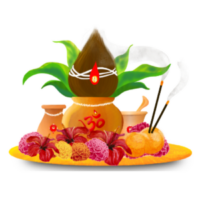?Dhuleti?

People call the Hindu festival of colors Dhuleti. Rang Pashi, which starts three days prior to Holika Dahan, is when the celebration starts. On a day with a full moon, people celebrate in Fagun. Holi and Dhuleti are the names of the first and second days of this festival, respectively. People play with colors and smear gulal on one another during what is known as the festival of colors.
There are numerous legends connected to the Dhuleti festival. It is a celebration of Radha Krishna’s heavenly love and the triumph of good over evil. According to the Hindu traditions of Shaivism and Shaktism, Holi is also connected to Shiva in deep meditation and his wife Parvati’s wish to bring Shiva back into the world.We should celebrate this occasion with love and respect, and we should resolve disputes. On Holika Dahan day, the celebrations start.
The demon king Hiranyakashyap wanted people to adore him, and Holika was his sister. Although the demon king was an adversary of Lord Vishnu, his son Prahlad was a follower of the deity. Hiranyakashyap disapproved of this and requested Holika’s assistance in killing Prahlad. In the hopes that the fire would kill Prahlad, Holika invited him to sit with her in front of a campfire. Prahlad, however, pleaded to Lord Vishnu and begged him to protect him. The fire ultimately burned and killed Holika.
It is believed that the Holi Festival began as a custom for married women to show their new family’s courtesy and prosperity. Since then, they have added a lot more to the event. Today, the triumph of good over evil is one of the main themes of the Holi Festival. To symbolize the defeat of evil inside themselves, Indians worldwide burn effigies of Holika in the shape of an old trunk and a stick-on street corner each year. People burn the bad energy in their homes and hearts by burning Holika.
Dhuleti welcomes spring and signifies the end of winter. In one legend, the breastfeeding of a demon poisoned Lord Krishna, causing his complexion to turn blue. This devastated him since he believed that no one, including Radha, whom he loved, would play with him anymore. He assumed Radha wouldn’t like him because she was fair-skinned. His mother, Yashoda, comforted him and instructed him to paint Radha’s face. Because of what he achieved, people now celebrate Holi annually with great fanfare and fervor.
Another legend related to Holi is also mentioned by the Puranas.The god Kamadeva, the Lord of Love and Desire, attempted to incite passion between the Lord and Goddess Parvati, which infuriated Lord Shiva. This was the day that enraged God Shiva burned Kamadeva with his third eye. Therefore, as a symbolic act of letting go of sexual cravings, people celebrate it by burning objects of desire. Starting on the eighth day of the Falgun Shukla Paksha and concluding on the Full Moon Day, Holashtak is observed for eight days.
The carnival of colors starts the following morning, when people go out into the streets to play with colors and use balloons or water pistols to saturate one another with colored water. In Vrindavan, widows and disenfranchised women dress in vibrant hues on Holi. Once more, the day following Holi, Sikhs in Punjab celebrate Hola Mohalla. While local rituals and ceremonies differ, they are all united by the spirit of this vibrant celebration.
***
